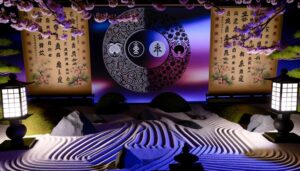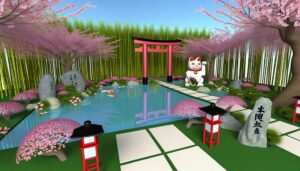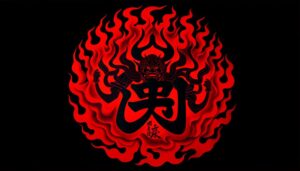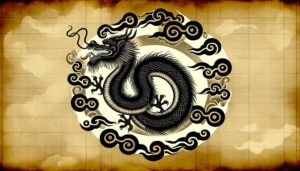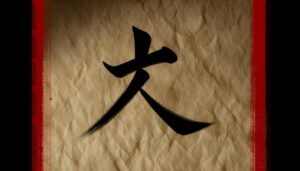What Is the Japanese Water Symbol?
The kanji for water in Japanese, 水 (mizu), is deeply rooted in ancient Chinese script, reflecting the cultural interconnectedness of East Asia. Pronounced 'mizu,' it symbolizes purity, adaptability, and fluidity, integral to Japanese cultural practices like tea ceremonies.
Artistic representations in calligraphy emphasize water's dynamic nature through fluid lines and brush techniques. In Shinto rituals, it represents purification, resonating with the values of flexibility and resilience.
Modern usage spans technology and branding, underscoring its enduring relevance. Explore the myriad ways this character influences Japanese culture and daily life.
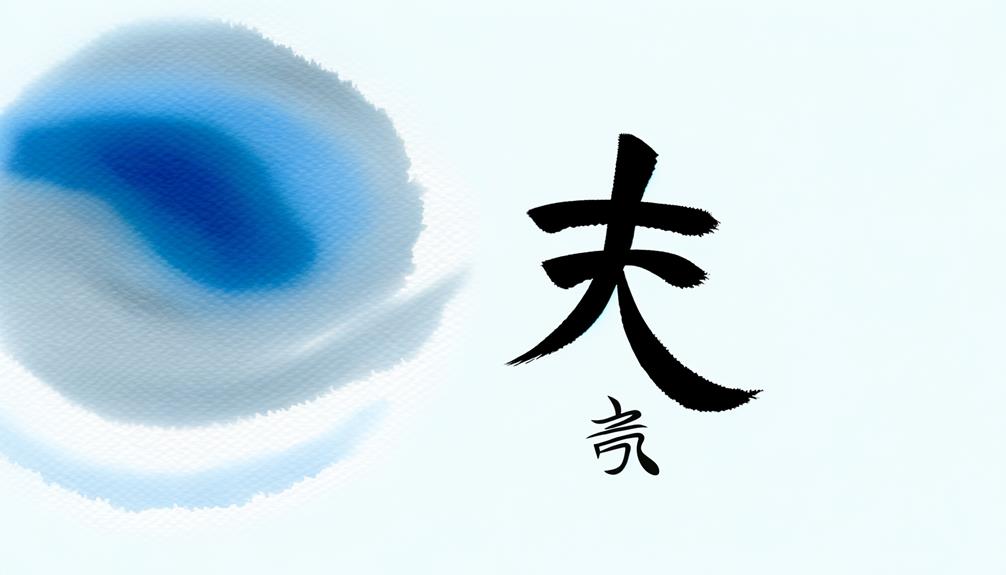
Key Takeaways
- The symbol for water in Japanese is the kanji '水' pronounced 'mizu.'
- This kanji signifies purity, adaptability, and fluidity in Japanese culture.
- Artistic representations use fluid lines and dynamic strokes to emphasize water's nature.
- It appears in compound words such as 'suibun' (moisture) and 'suiei' (swimming).
- The kanji remains relevant in contemporary Japan, appearing in calligraphy and technology.
Historical Origins
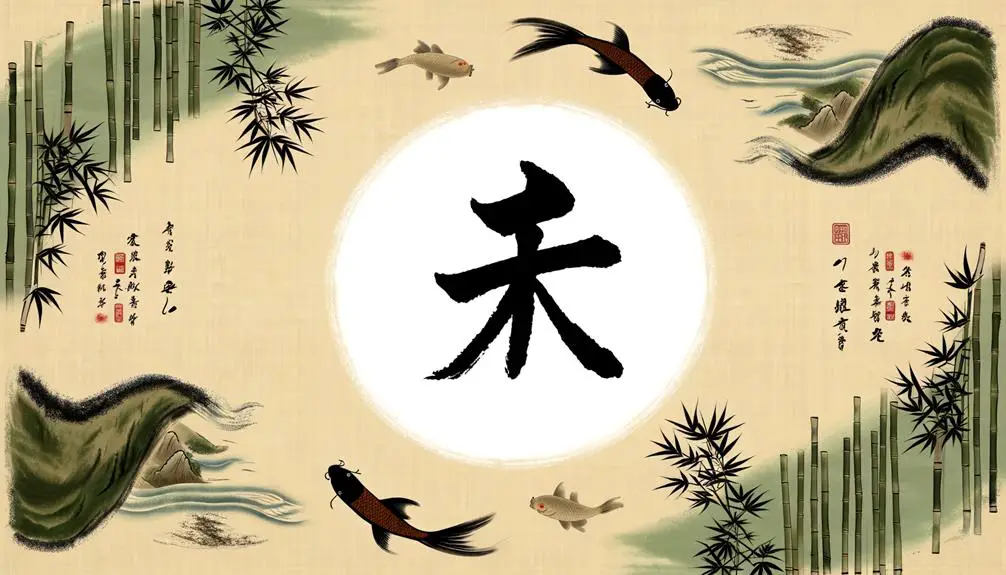
Historically, the symbol for water in Japanese, represented by the kanji '水' (mizu), has its origins rooted in ancient Chinese script, specifically the Oracle Bone Script used during the Shang Dynasty. This early form of writing, inscribed on animal bones and turtle shells, was used for divination and recorded essential elements of daily life, including natural resources like water.
Over centuries, the script evolved through various stages, including the Seal Script and Clerical Script, before becoming the Regular Script prevalent today. The kanji '水' encapsulates cultural and historical significance, illustrating the transference of linguistic elements from Chinese to Japanese.
This evolution underscores the profound interconnectedness of East Asian cultures and their shared heritage in written communication.
Pronunciation and Meaning
Building on its rich historical origins, the kanji for water, '水' (mizu), in Japanese is pronounced 'mizu' and signifies the fundamental element of water, integral to both daily life and various cultural practices.
This character is not only essential in describing the physical substance but also holds metaphorical significance in Japanese culture. It symbolizes purity, adaptability, and fluidity, reflecting the natural characteristics of water.
In daily language, 'mizu' appears in numerous compound words, such as 'sui' in 'suibun' (水分, moisture) and 'suiei' (水泳, swimming).
Moreover, the kanji is used in traditional practices like tea ceremonies, where the quality of water directly influences the tea's flavor, underscoring its cultural importance.
Artistic Representations
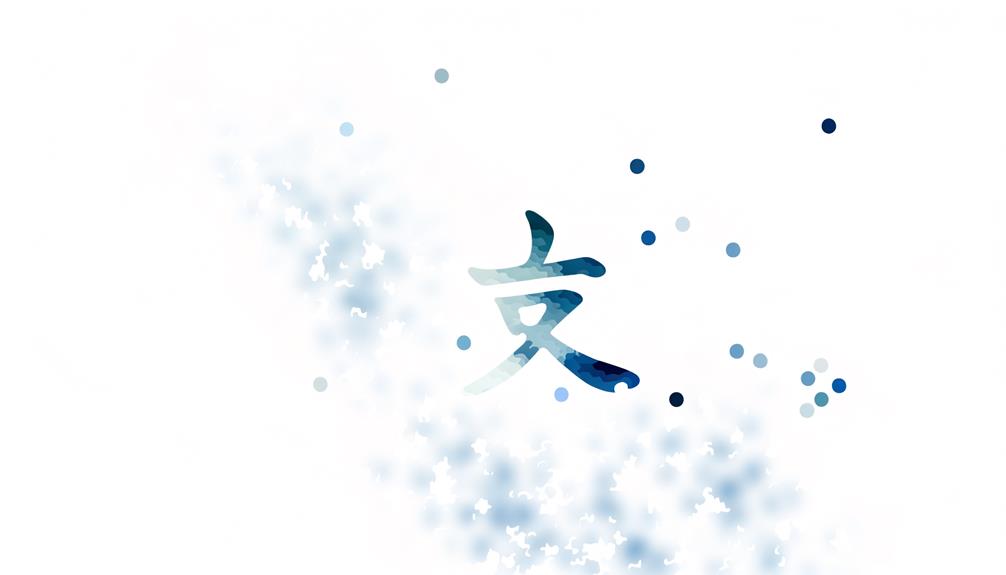
Artistic representations of the kanji for water, '水' (mizu), often incorporate fluid lines and dynamic strokes to evoke the essence of water's fluidity and adaptability.
In traditional Japanese calligraphy (shodo), the kanji is rendered with varying brush pressure and movement, emphasizing the spontaneous and ever-changing nature of water. Artists may employ techniques such as gradation and ink splashes to symbolize water's transparency and motion.
Additionally, in contemporary graphic design, stylized versions of '水' can be found in logos and digital art, where its form is abstracted to convey modern interpretations of fluidity. These artistic endeavors not only highlight the visual beauty of the kanji but also deepen the viewer's connection to its inherent natural qualities.
Cultural Significance
The kanji for water, '水' (mizu), holds profound cultural significance in Japan, symbolizing purity, adaptability, and the essential life force within traditional and contemporary contexts. In Shinto rituals, water is crucial for purification, representing spiritual cleansing. The adaptability of water, effortlessly assuming the shape of its container, mirrors the Japanese cultural emphasis on flexibility and resilience. Additionally, water's life-sustaining properties are celebrated in arts and literature, underscoring its significance.
| Context | Symbolism | Cultural Practice |
|---|---|---|
| Shinto Rituals | Purification | Misogi (water cleansing) |
| Literature | Life Force | Haiku and Waka poetry |
| Daily Life | Adaptability | Zen gardens, tea ceremony |
This table illustrates the diverse manifestations of water's symbolic meanings.
Modern Usage
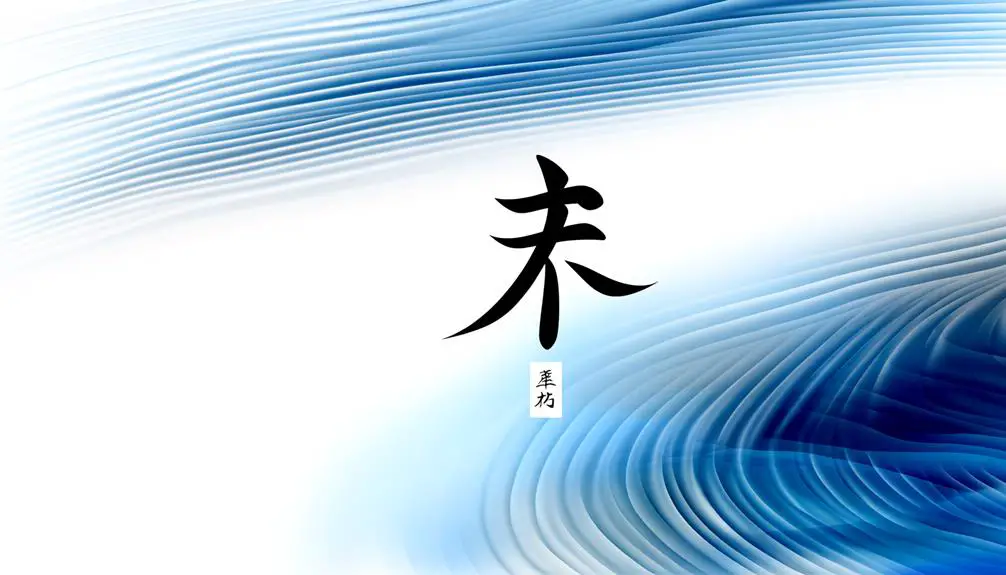
In contemporary Japan, the kanji for water ('水') continues to permeate various aspects of daily life and modern practices, reflecting its enduring relevance and symbolic depth.
Frequently seen in calligraphy, it embodies purity and fluidity, resonating with aesthetic principles of wabi-sabi.
In technology, the character appears in weather apps to denote rain and humidity, underscoring its utilitarian importance.
Additionally, '水' is integral in brand names and product labels, especially in industries related to health and wellness, signifying cleanliness and energy.
The kanji is also prevalent in education, where students learn it early, highlighting its foundational status.
Hence, '水' remains a crucial cultural and practical symbol, seamlessly integrating tradition with contemporary relevance.
Conclusion
The Japanese symbol for water, 水 (mizu), encapsulates a rich historical and cultural heritage, illustrating its profound significance in various artistic and modern contexts. Its pronunciation, meaning, and aesthetic representations collectively reflect the elemental and spiritual importance of water in Japanese culture.
For instance, in traditional Japanese tea ceremonies, the ritualistic handling of water underscores its purity and essential role, symbolizing both physical sustenance and spiritual cleansing. Such practices exemplify the enduring reverence for 水 in contemporary Japan.

